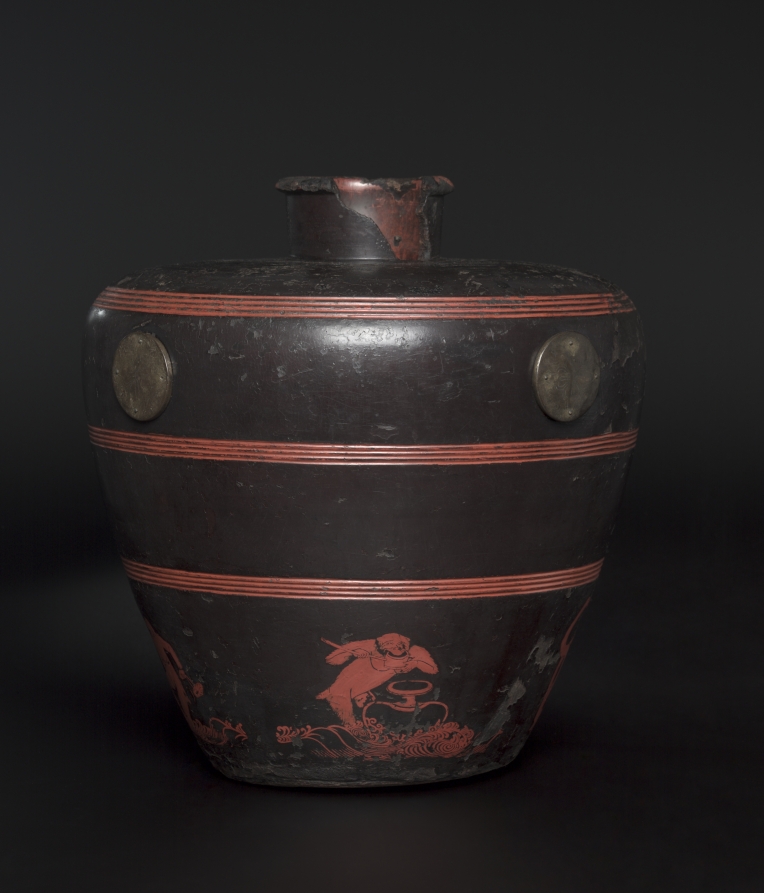| schema:description 10 | "technique: wood, covered with hemp cloth and colored lacquer" |
| schema:description | "measurements: Diameter: 47.2 cm (18 9/16 in.); Overall: 49.4 cm (19 7/16 in.)" |
| schema:description | "inscription: Dated 1302" |
| schema:description | "creditline: Leonard C. Hanna, Jr. Fund" |
| schema:description | "type: Lacquer" |
| schema:description | "id: 152032" |
| schema:description | "culture: Japan, Kamakura period (1185-1333)" |
| schema:description | "wall_description: To make this vessel, a wooden form was covered with successive layers of lacquer, the clear sap of the highly toxic Rhus verniciflua tree. This time-consuming process requires each layer to dry before adding another. Lacquer was, therefore, an expensive status symbol; aristocrats prized lacquered architectural features, furniture, musical instruments, and serving vessels. This jar is particularly noteworthy as the only surviving lacquer jar with a narrative scene from the period, showing a family of monkeys trying to cross a river at the bottom....(more)" |
| schema:description | "tombstone: Jar with Scenes of Frolicking Monkeys, 1302. Japan, Kamakura period (1185-1333). Wood, covered with hemp cloth and colored lacquer; diameter: 47.2 cm (18 9/16 in.); overall: 49.4 cm (19 7/16 in.). The Cleveland Museum of Art, Leonard C. Hanna, Jr. Fund 1984.8...(more)" |
| schema:description | "collection: Japanese Art" |

